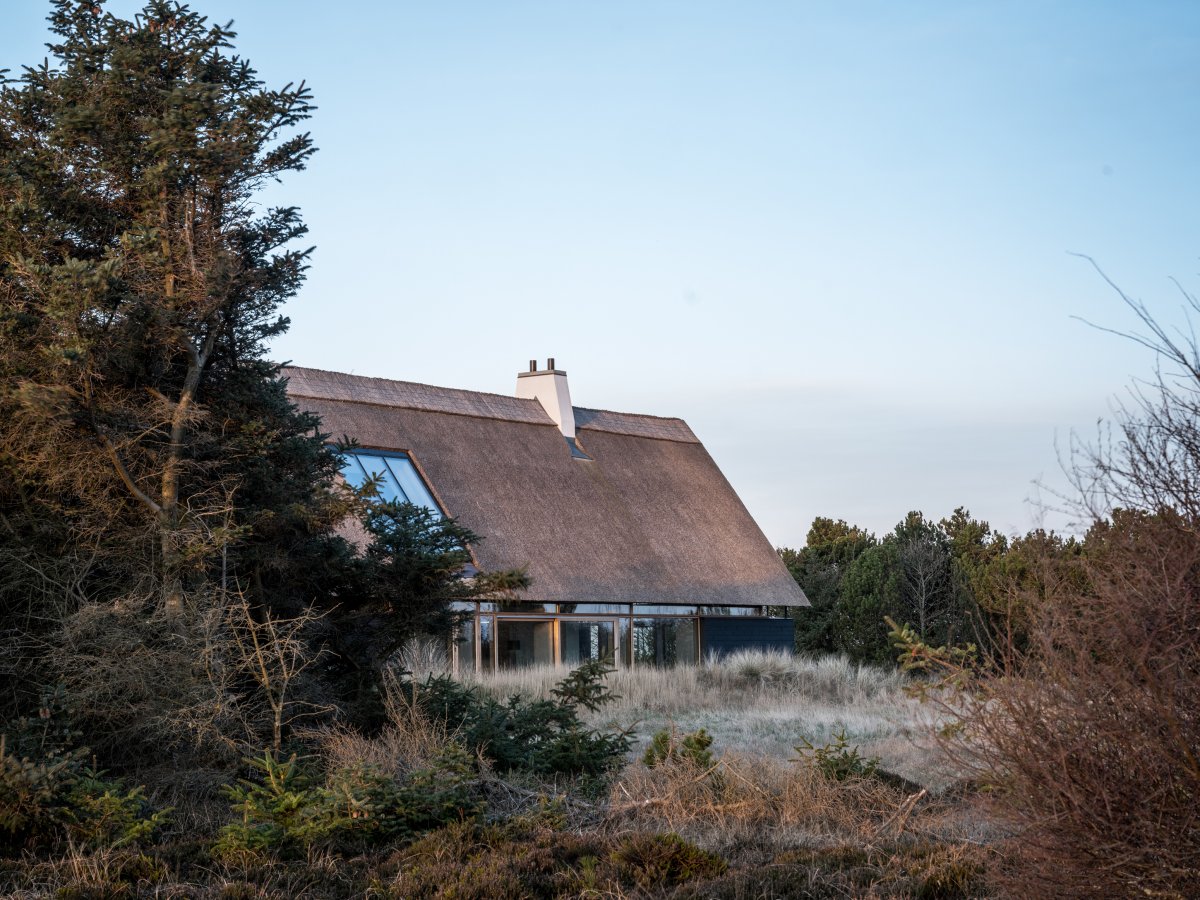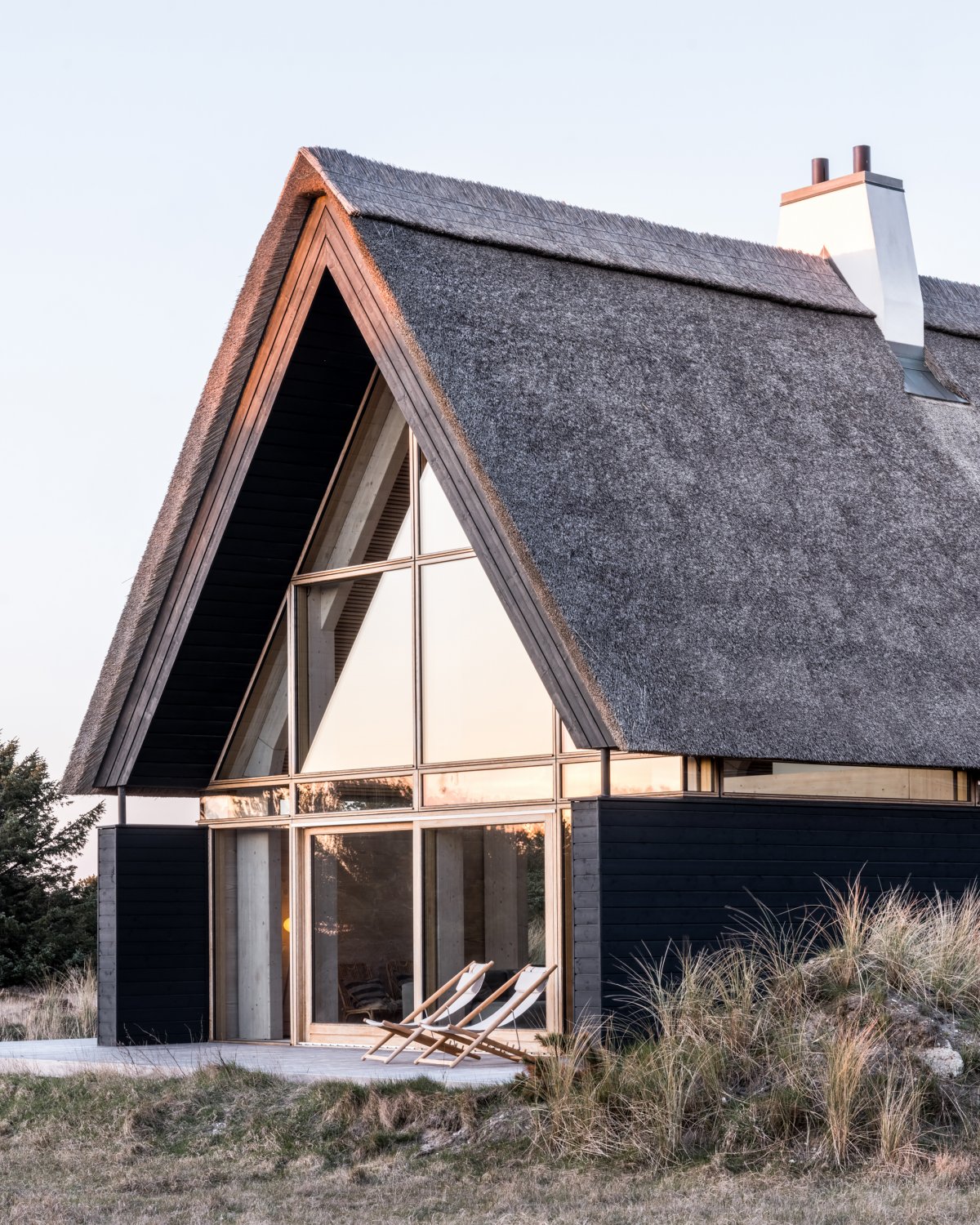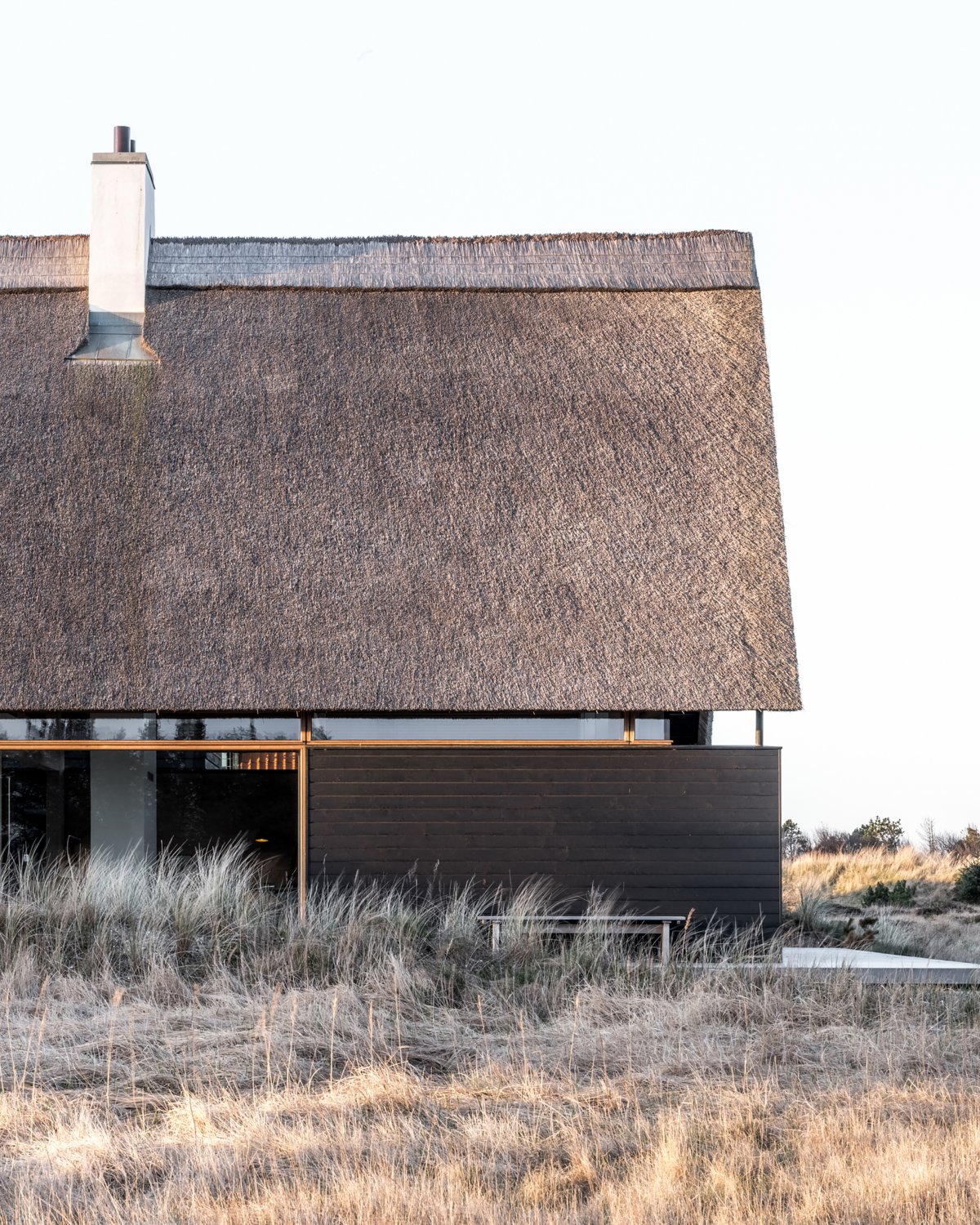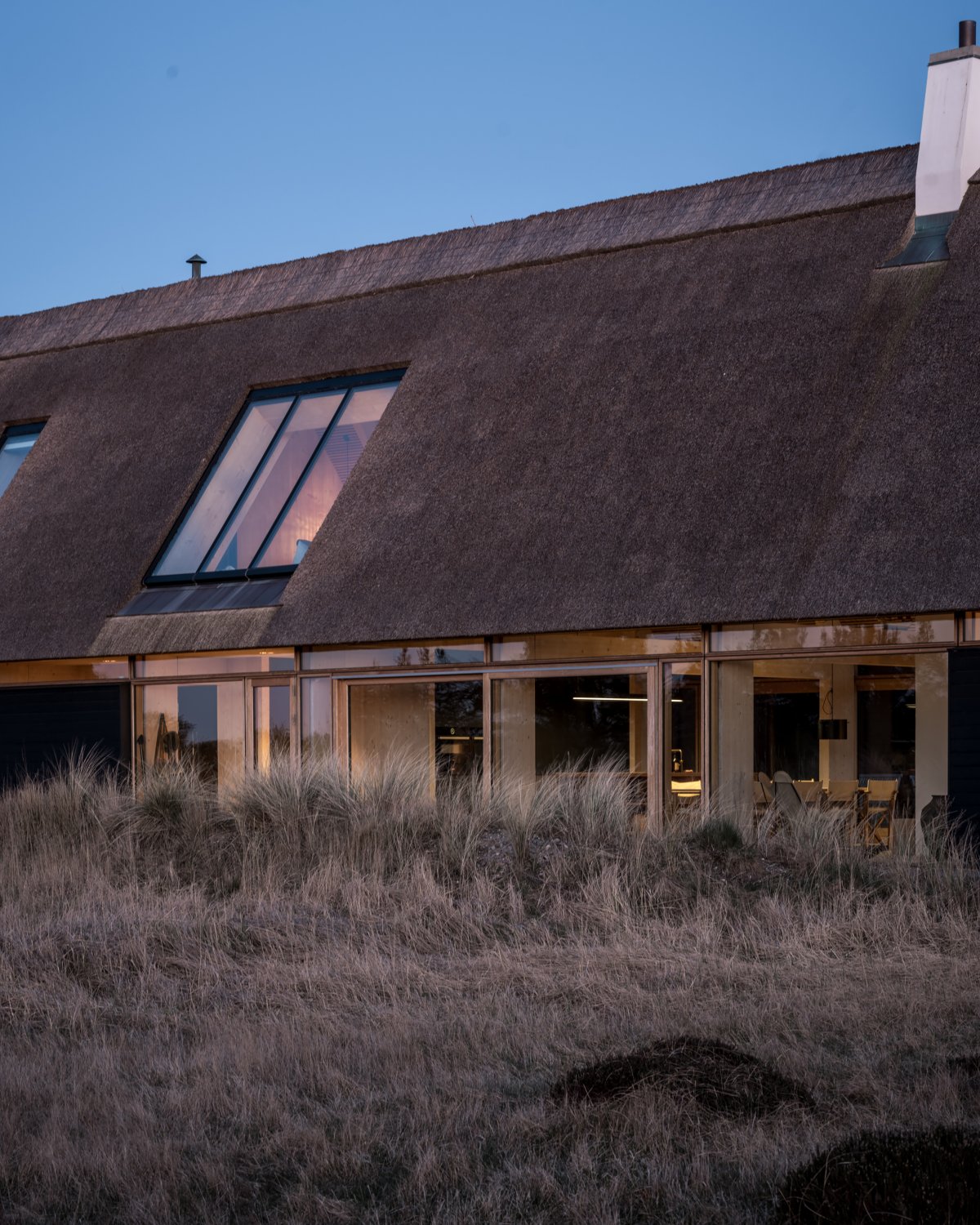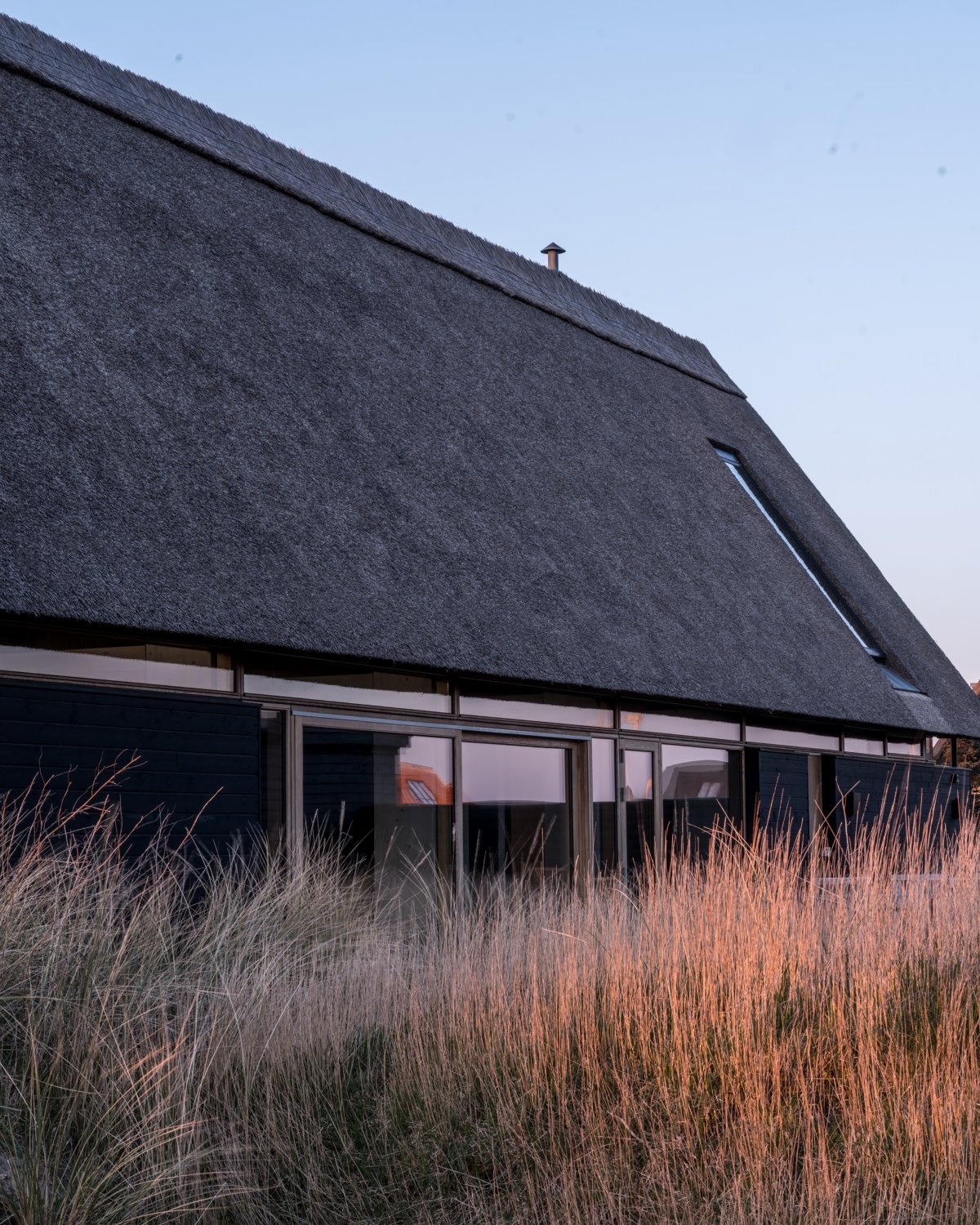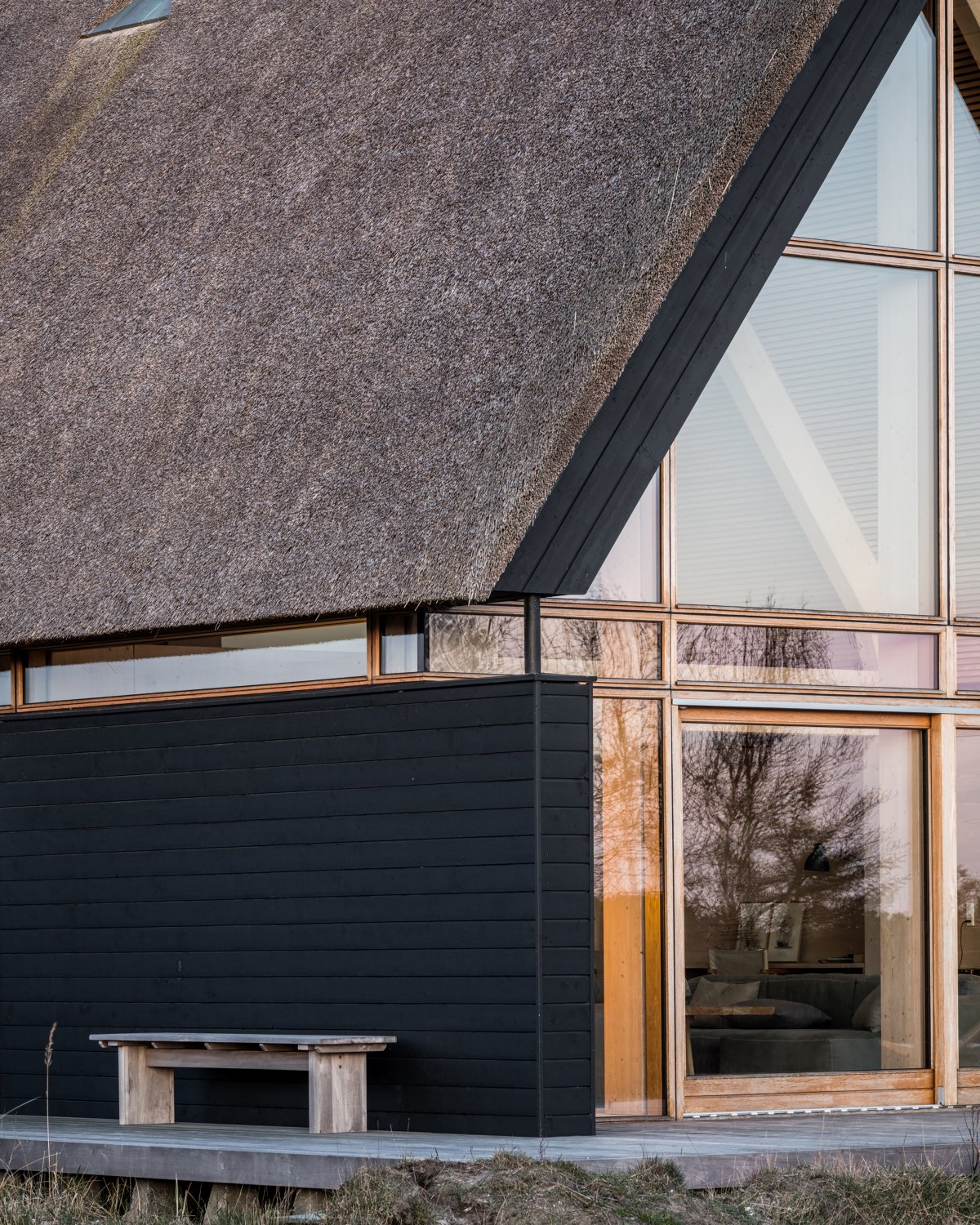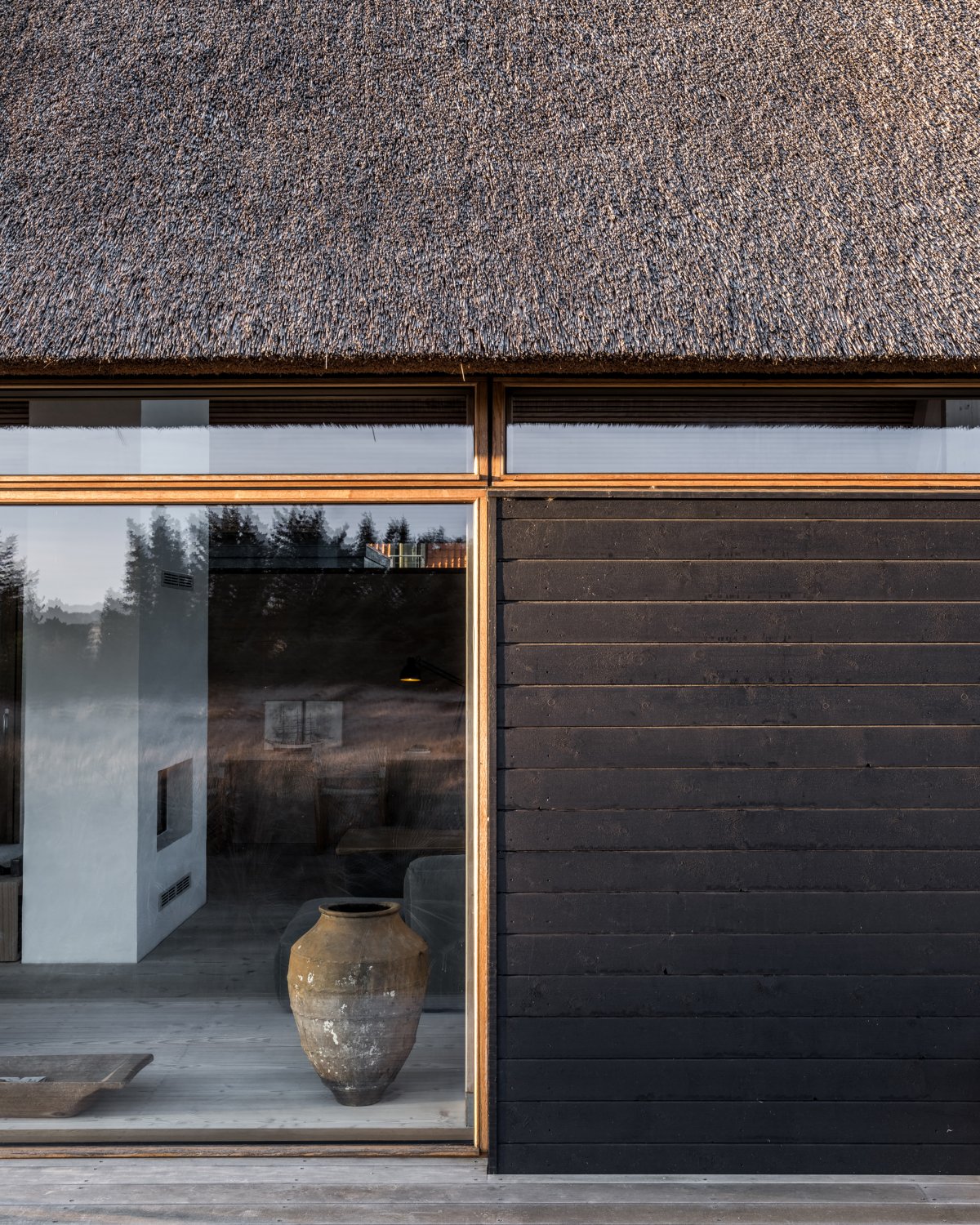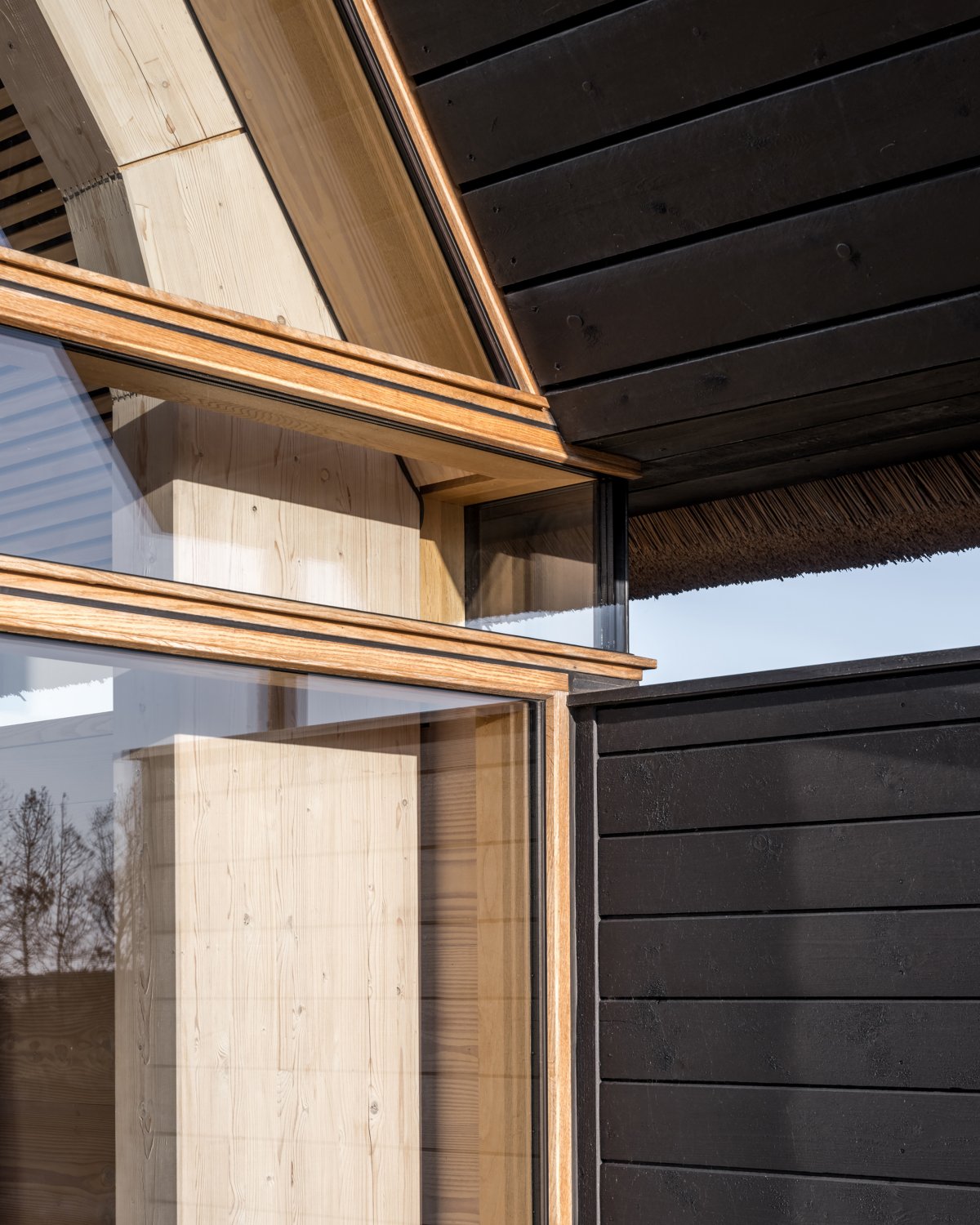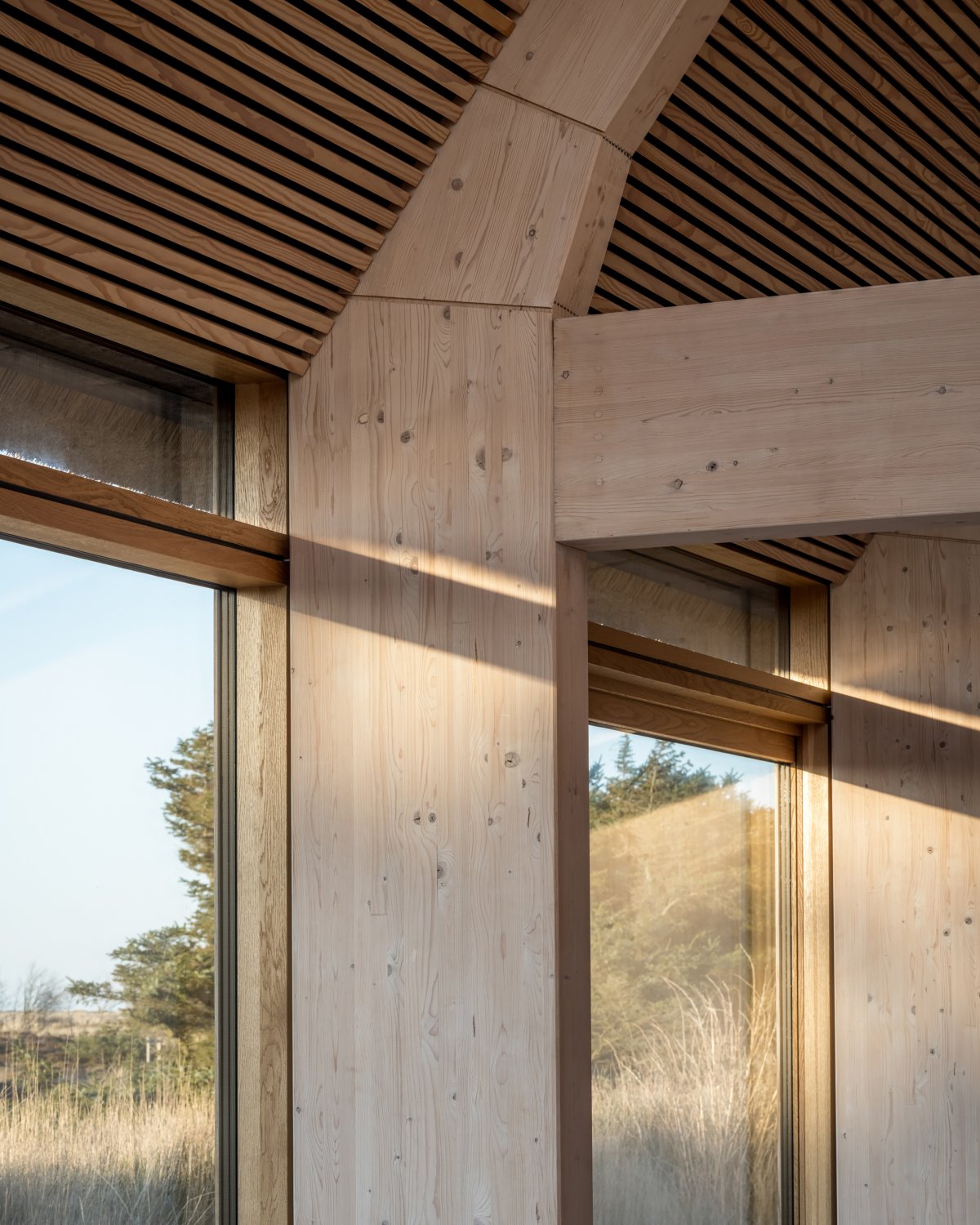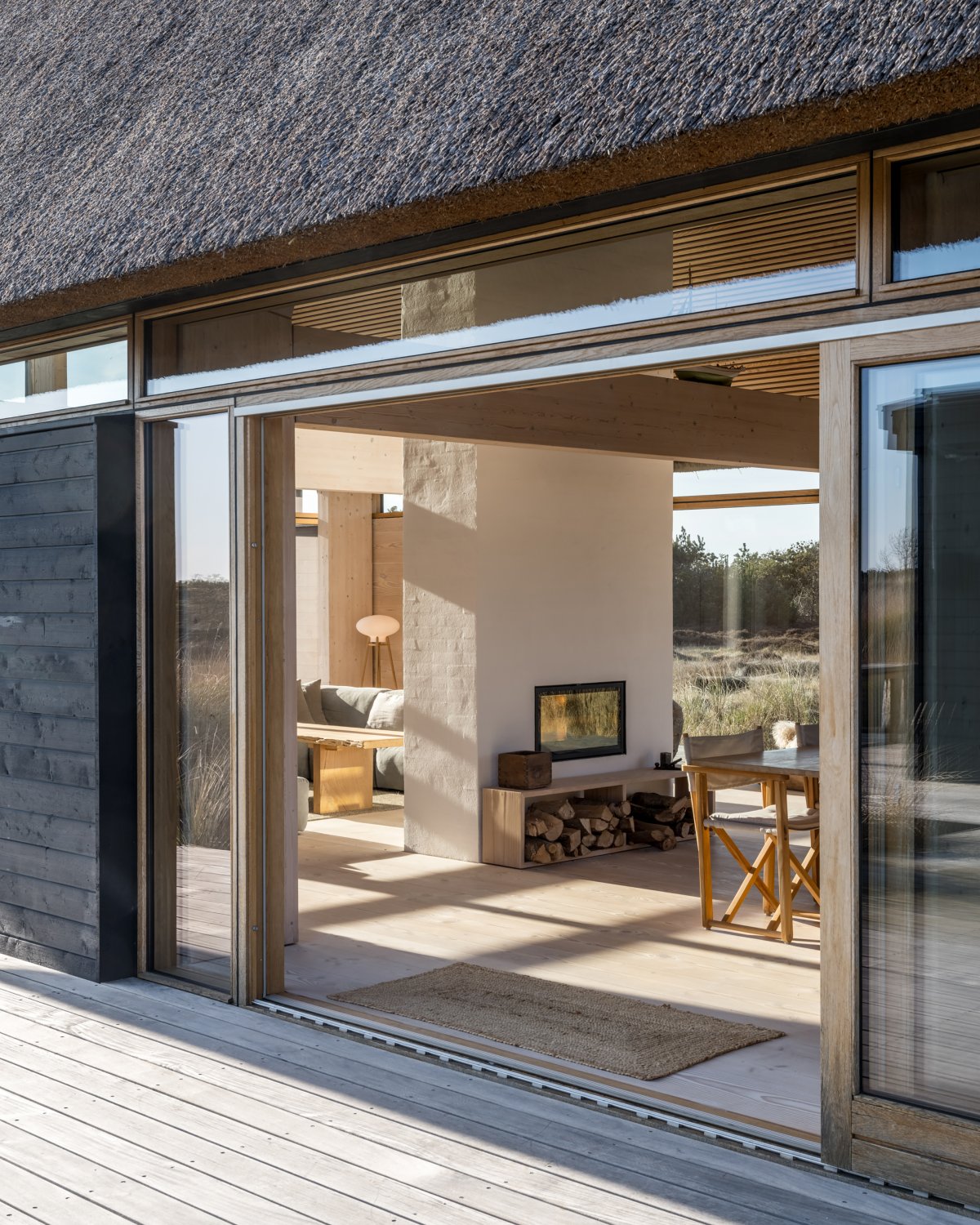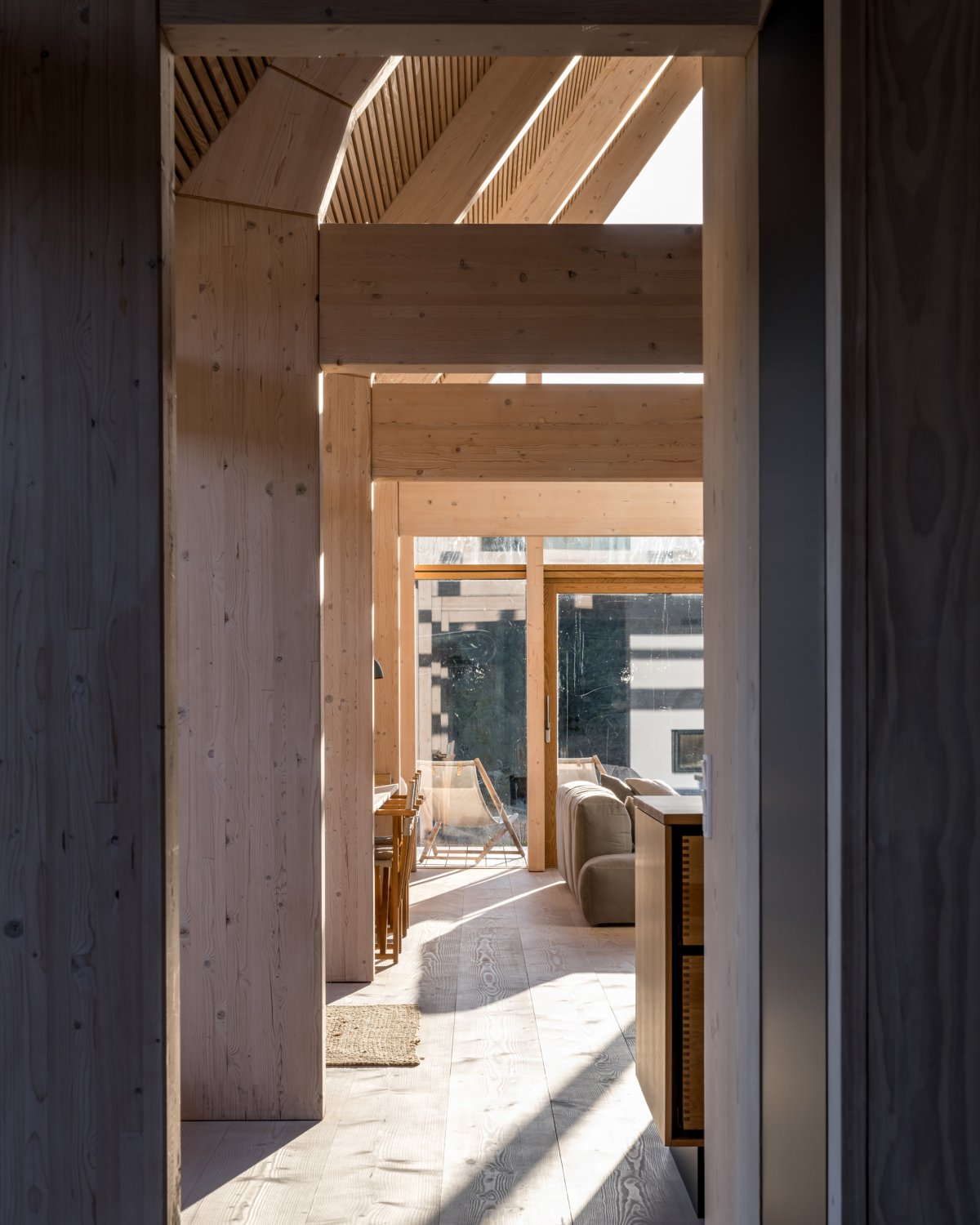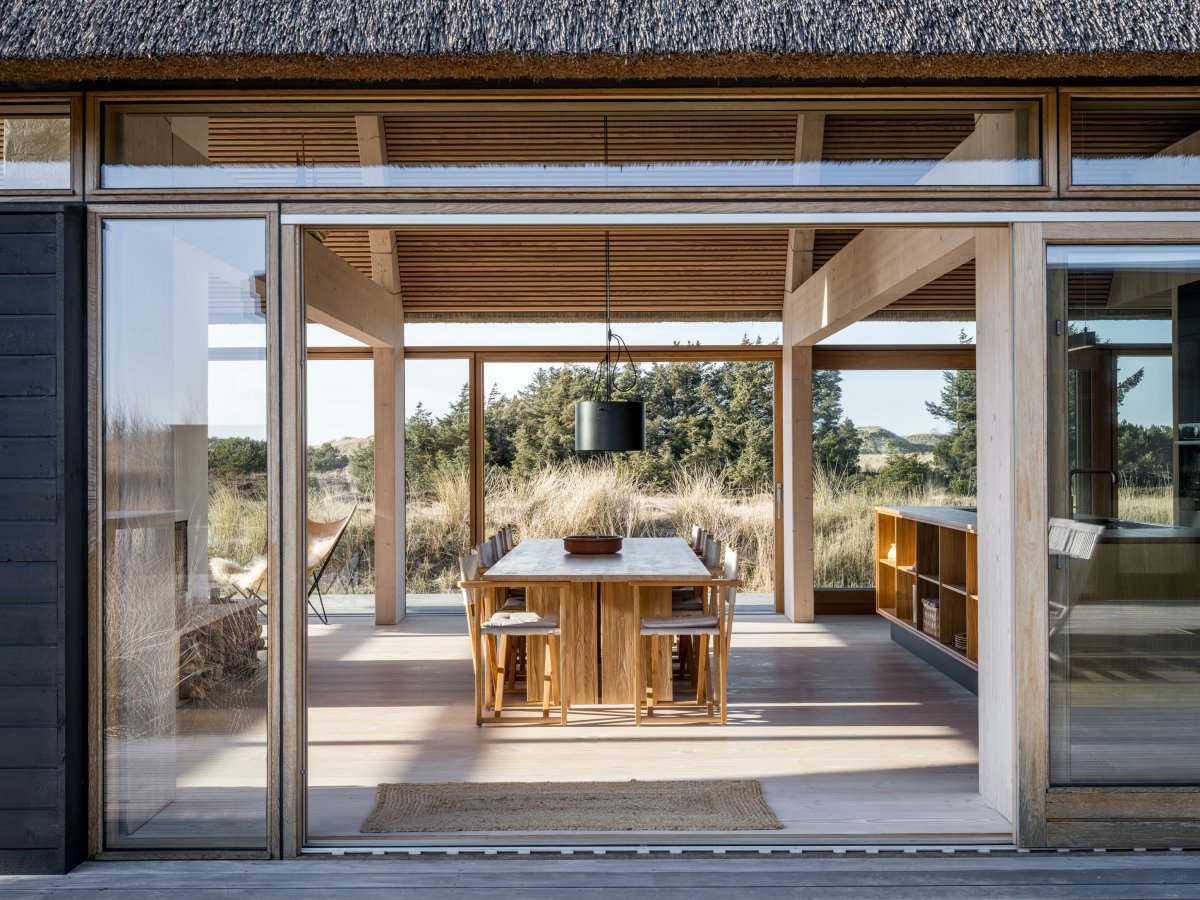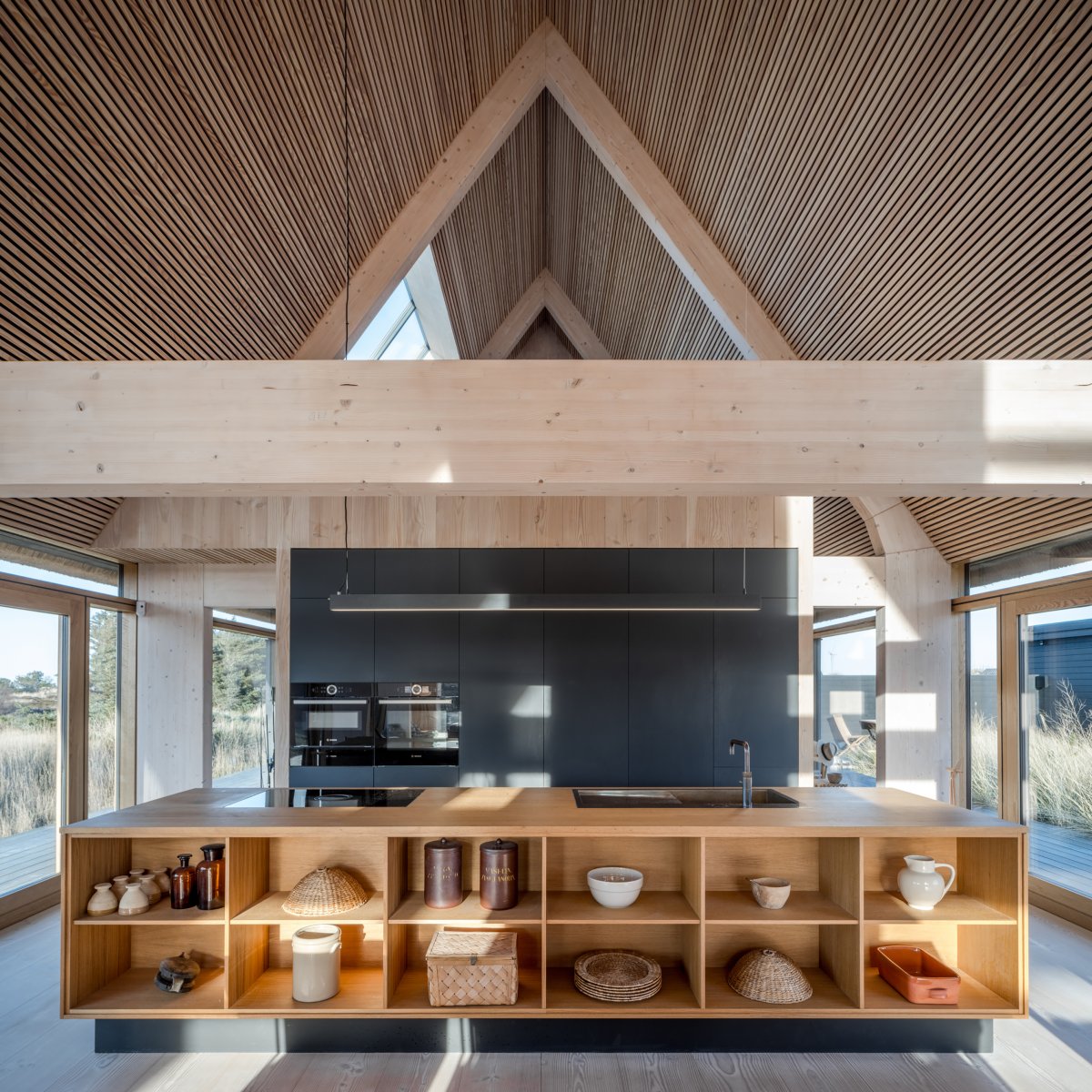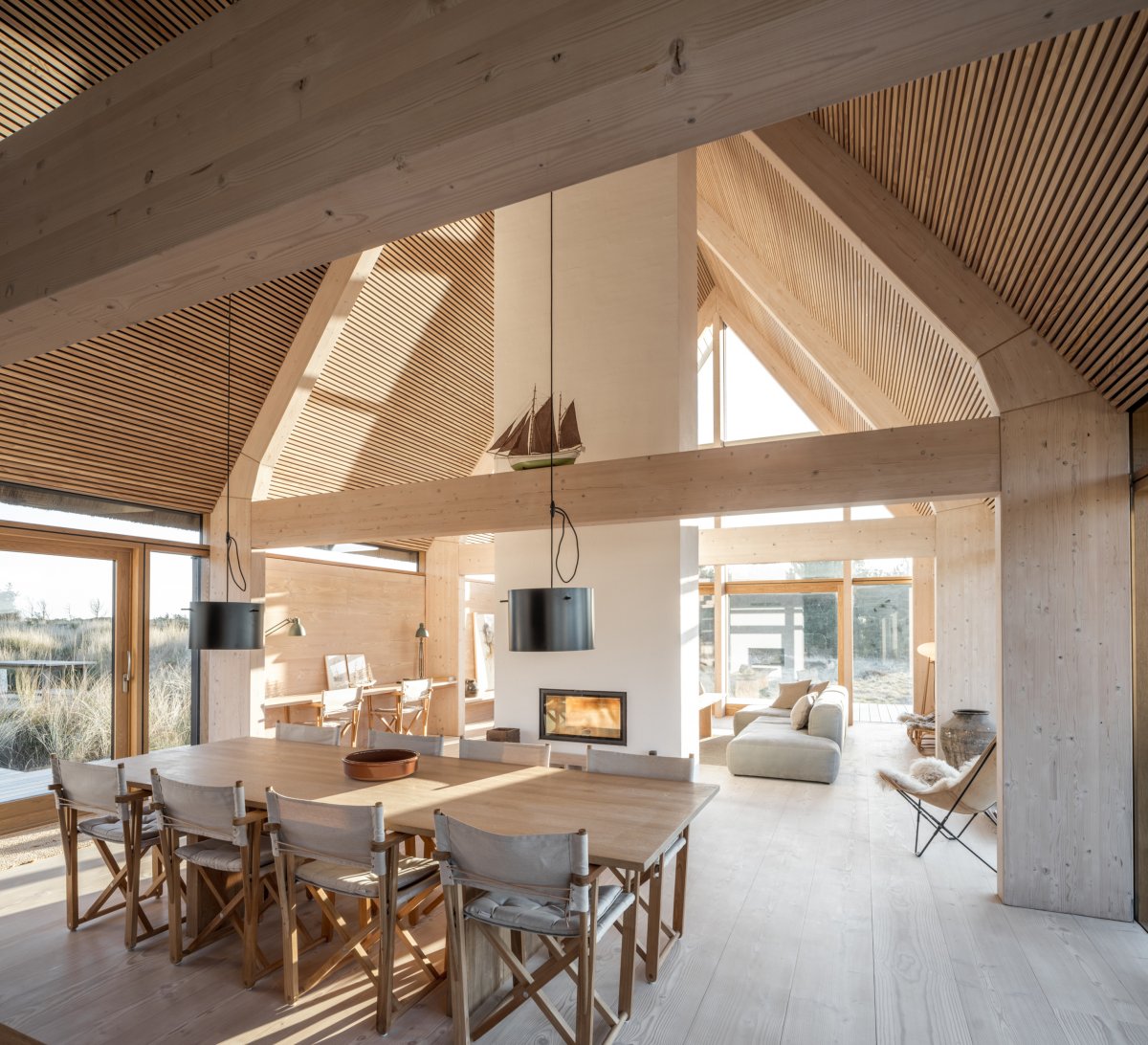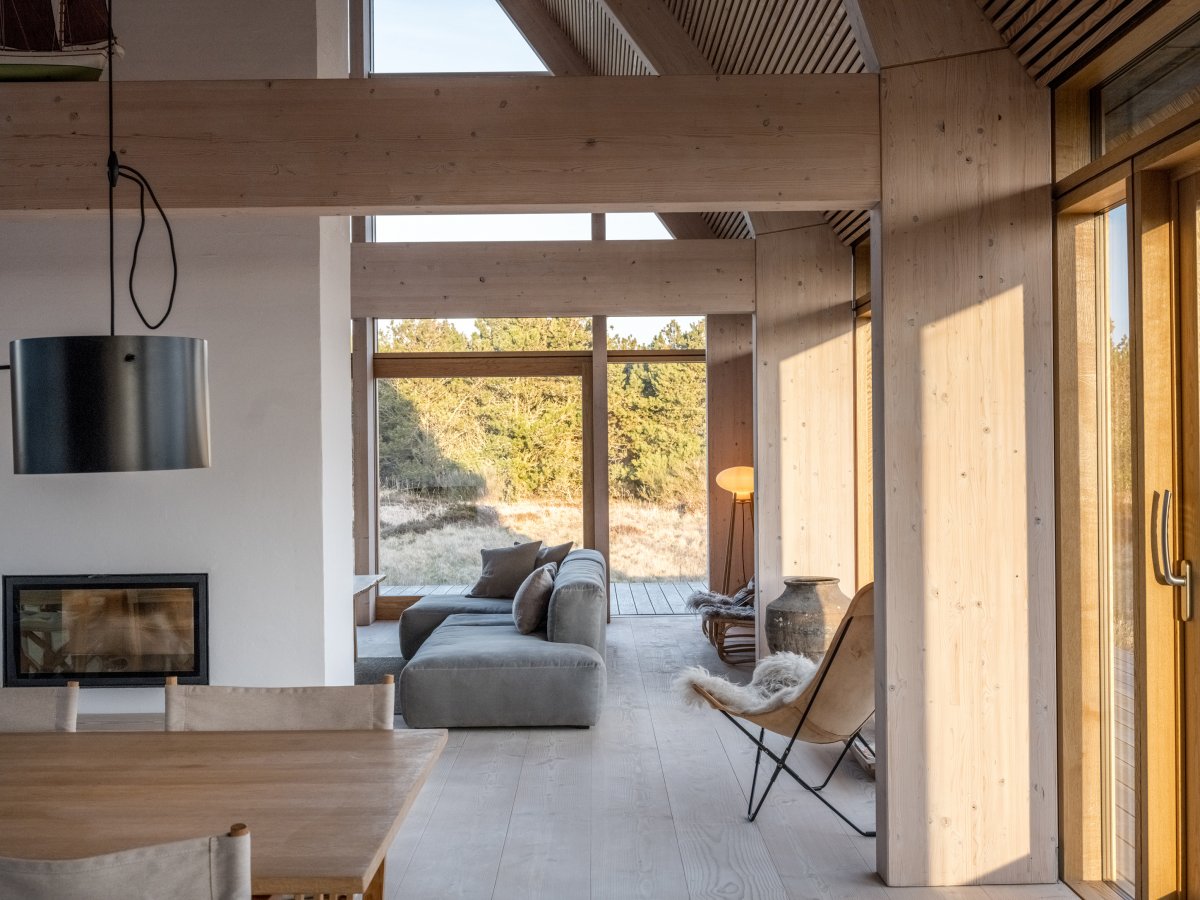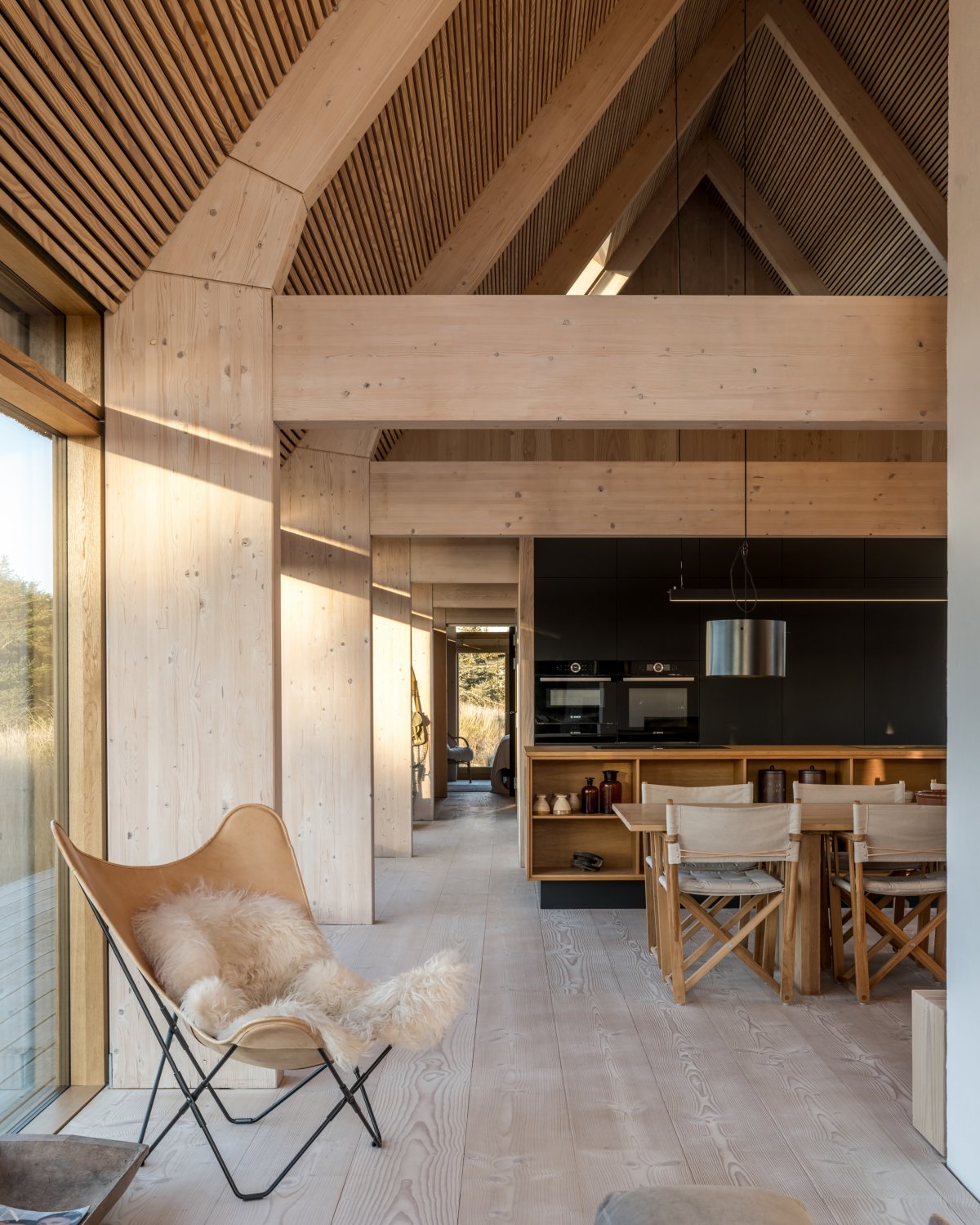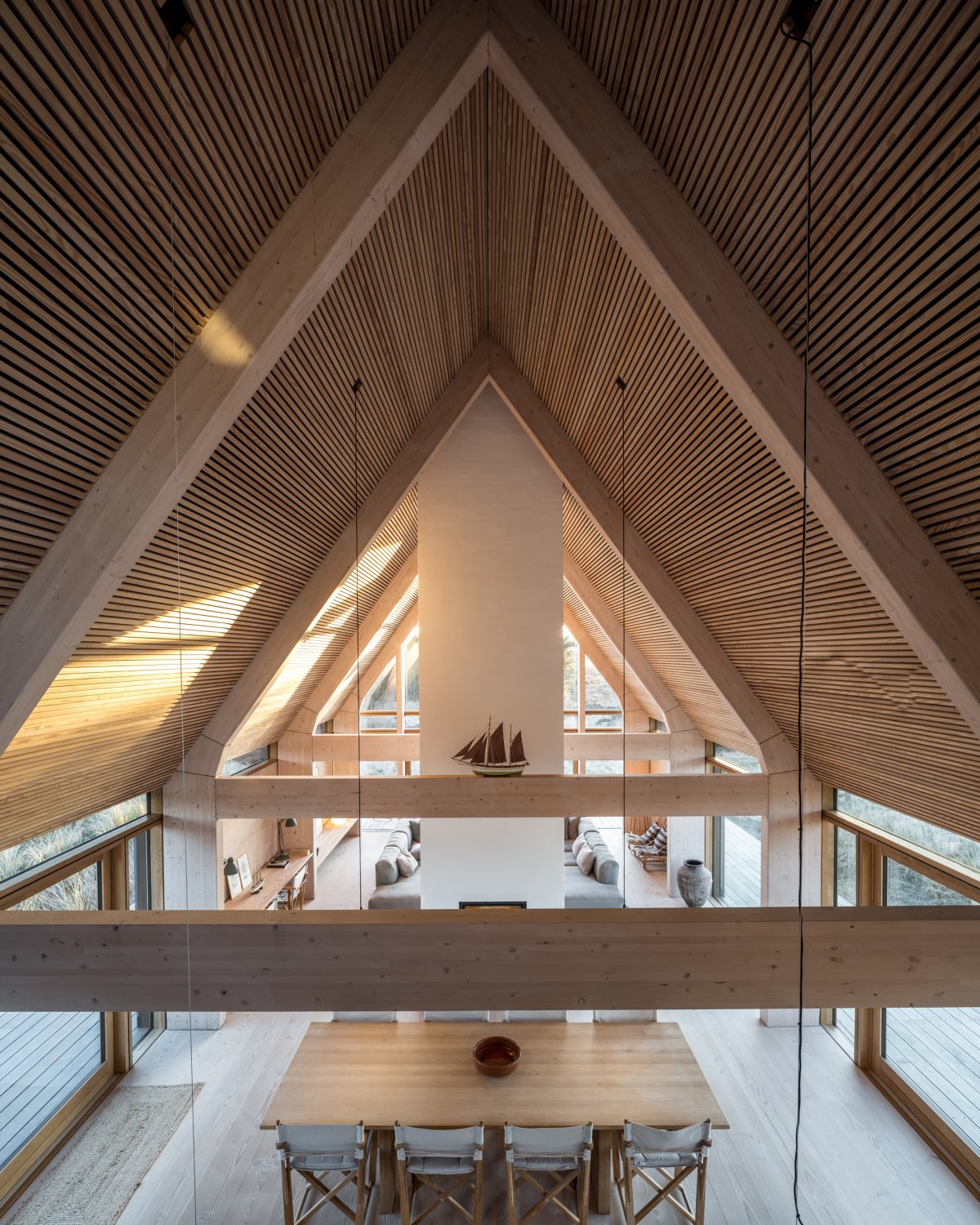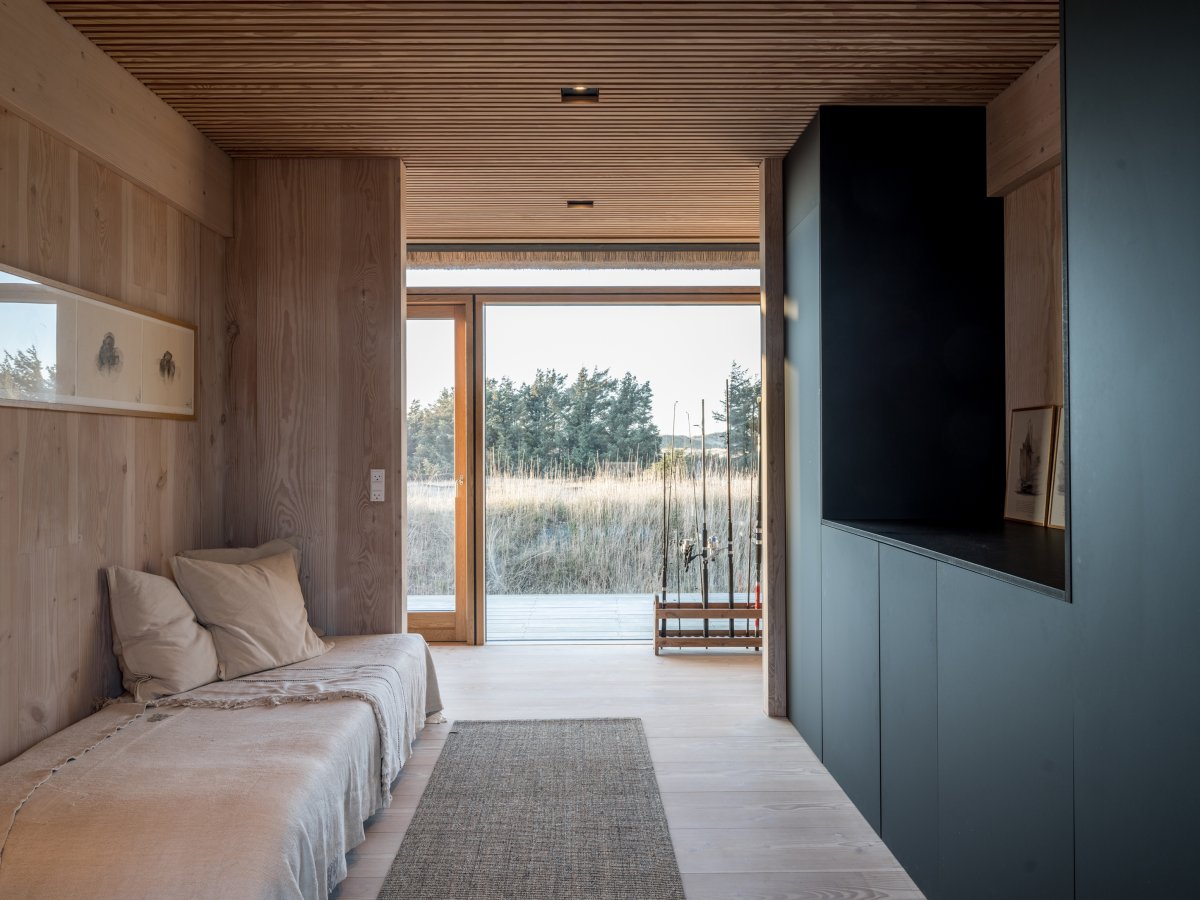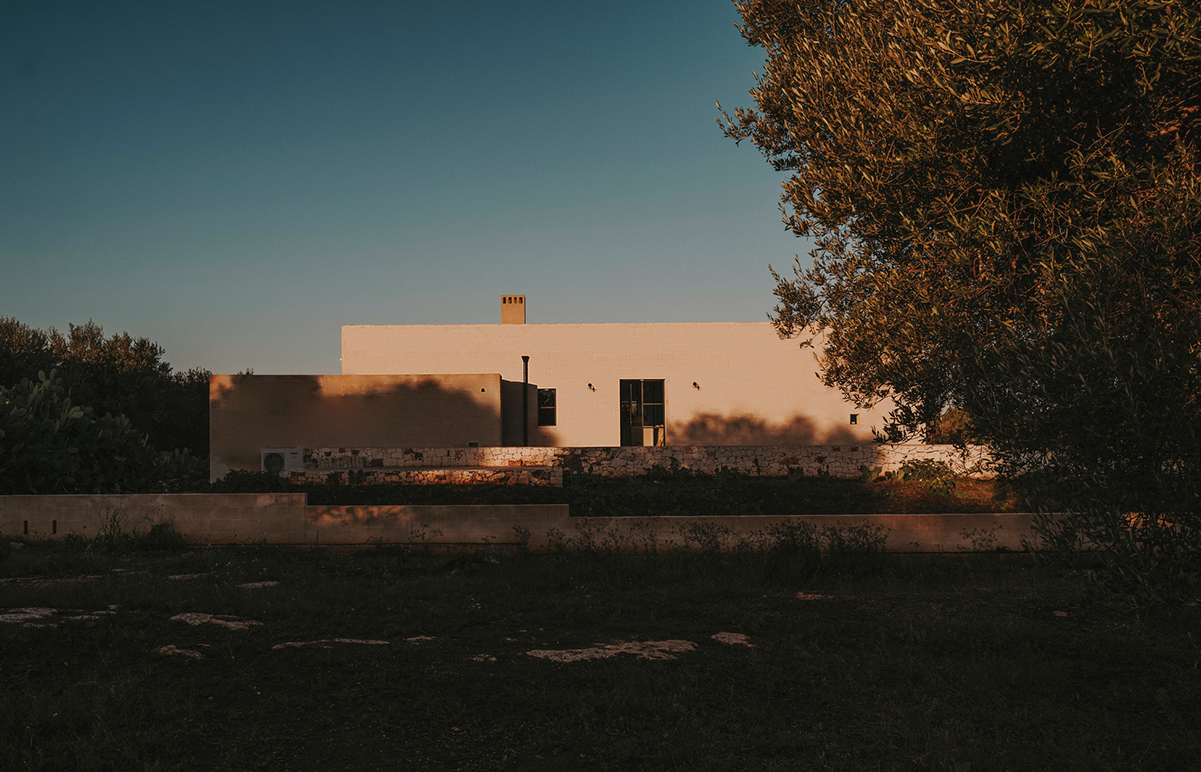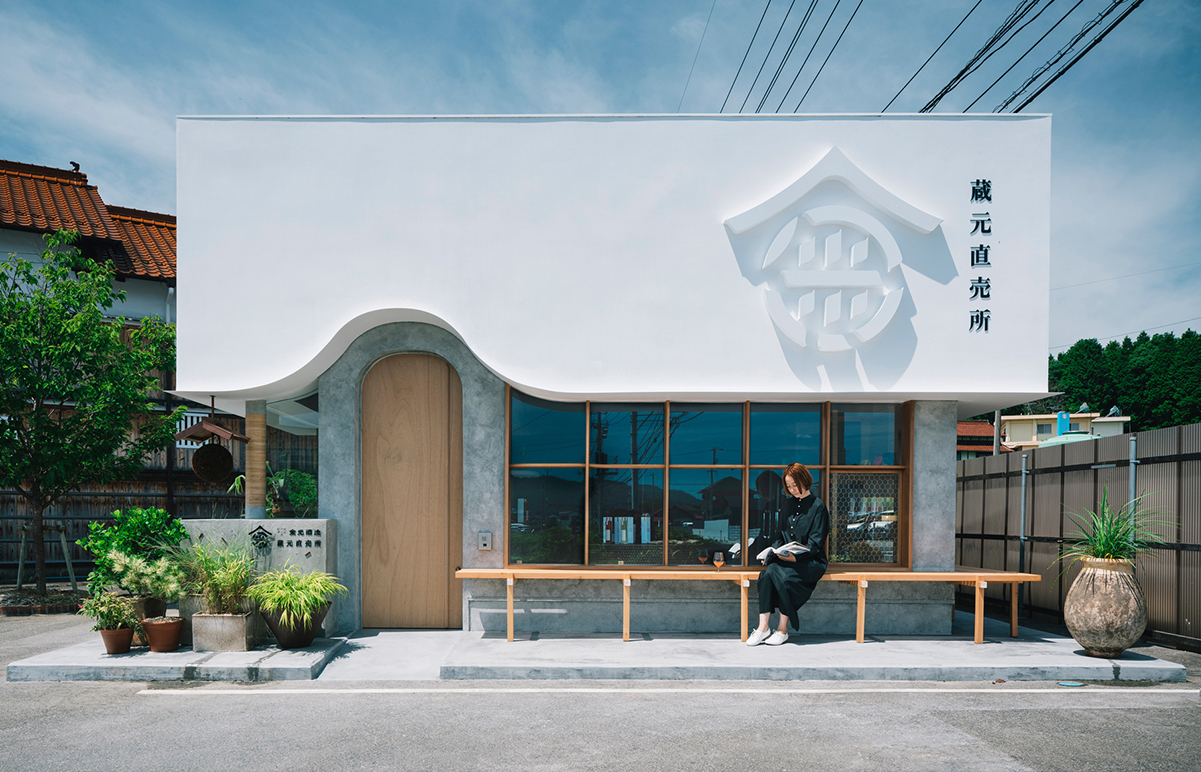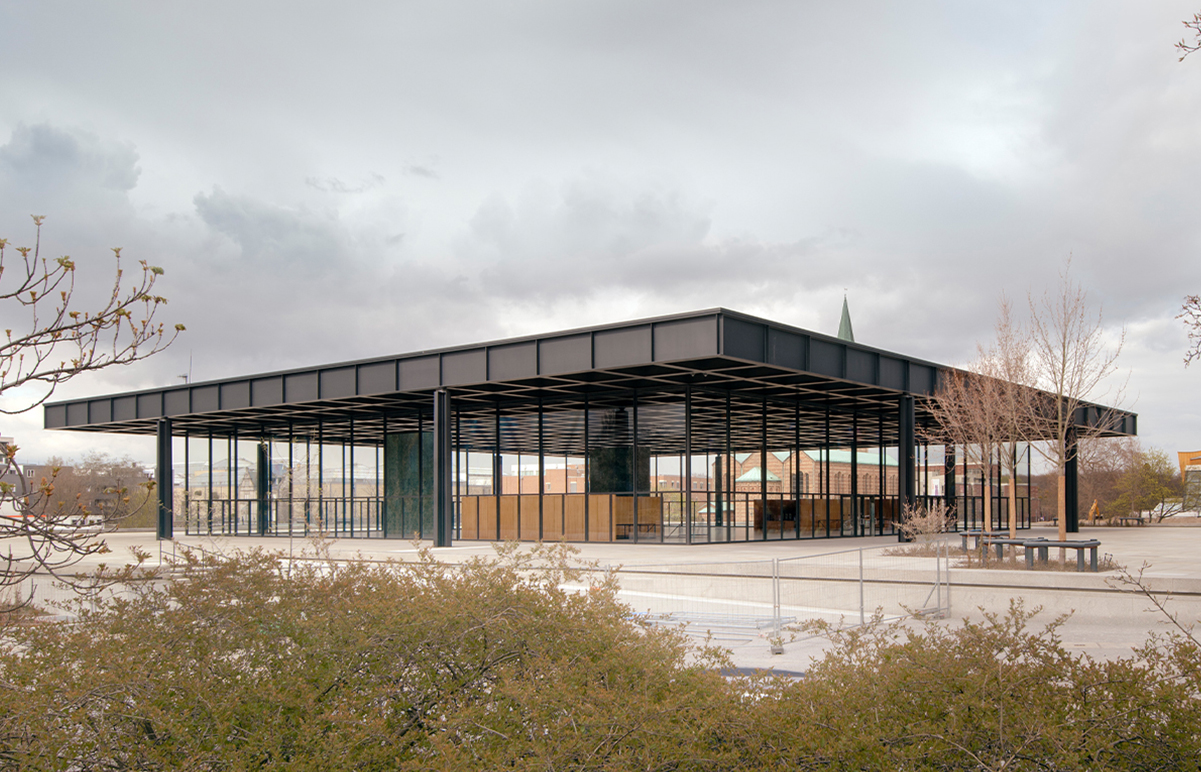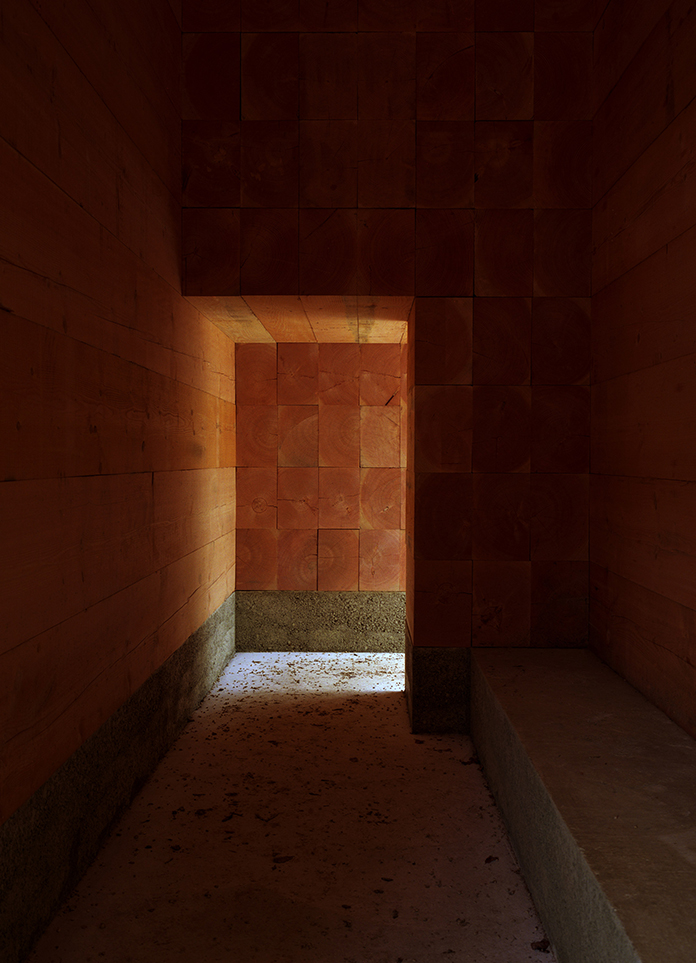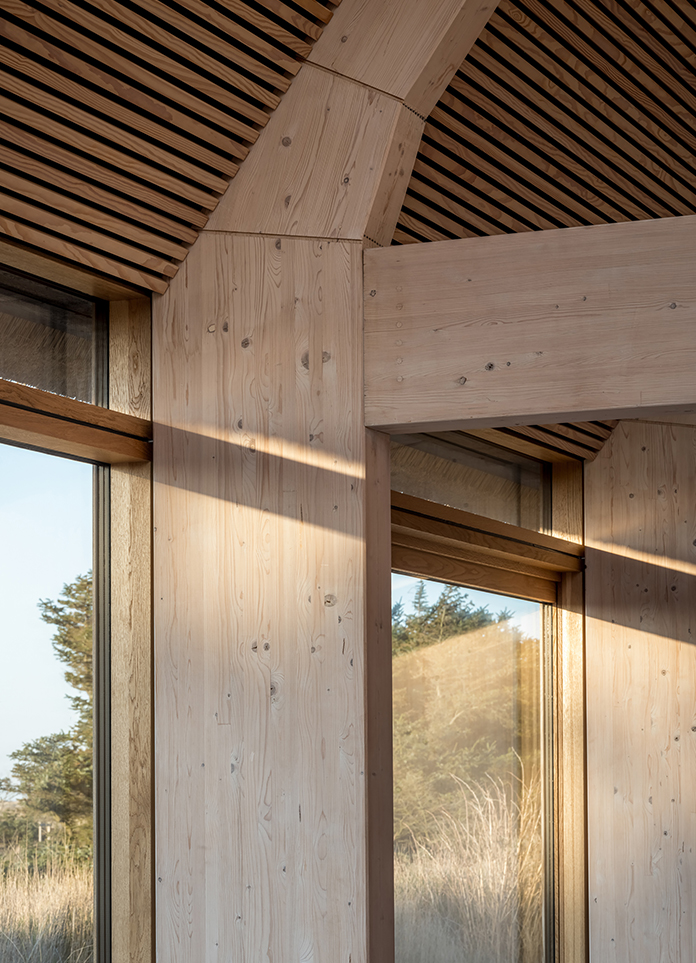
Located in Skagen, the northernmost point in Denmark, the summer house pays tribute to local architecture and the history of the town. Therefore, the summer house’s materials draw inspiration from houses built during Skagen’s Black Period, when charred wood from shipwrecks was often used to build houses whose roofs were covered in straw. A thatched roof and a black-painted wooden exterior were thus used for the facades.
The most decisive aspect when drawing the interior of the house was the idea of feeling together, even when someone is isolated in the house. It was important to bring together three generations, so different areas needed to be created to accommodate everyone’s ways of occupying a space. Architecturally, that is translated by creating both open areas, suitable for get-togethers, like the centrally located kitchen, and more secluded areas where one can be alone. To create an even more inclusive space, special focus was put to the acoustics of the house by incorporating an acoustic ceiling to dampen the noise.
The kitchen is the natural center of the house, since it was important for the family to get together during mealtimes. It is therefore placed centrally, closed to the stair connecting the ground and first floor. It is overlooking the dining room, and thanks to the glazing on both sides, there is a natural transition between the interior and the exterior. The thick oak window frames were significant to support the ambition to blur the limit between inside and outside.
In order to give an identity to more intimate spaces, to make them feel more personal and to create a contrast with the more open and social rooms of the house, the ceiling height is lower in some of these spaces like for example the multi-purpose room behind the kitchen. In that way, the atmosphere changes from the high-ceiling social areas to the more intimate zones.
The muted colors of the interior accentuate the beauty of the surrounding landscape, as wood and nature blend together. Furthermore, the wood’s tactile feeling, smell and sound create a natural, warm environment for the family, and it goes hand-in-hand with the vision of designing the house as being a part of nature.
- Architect: PAX Architects
- Photos: Rasmus Hjortshøj
